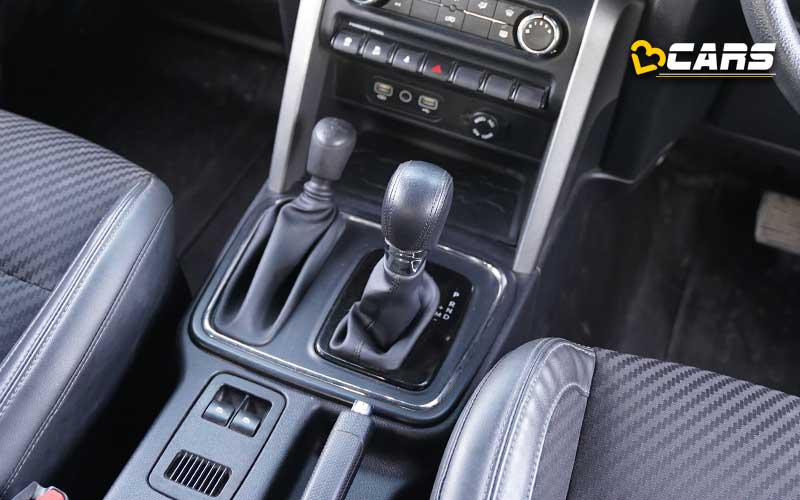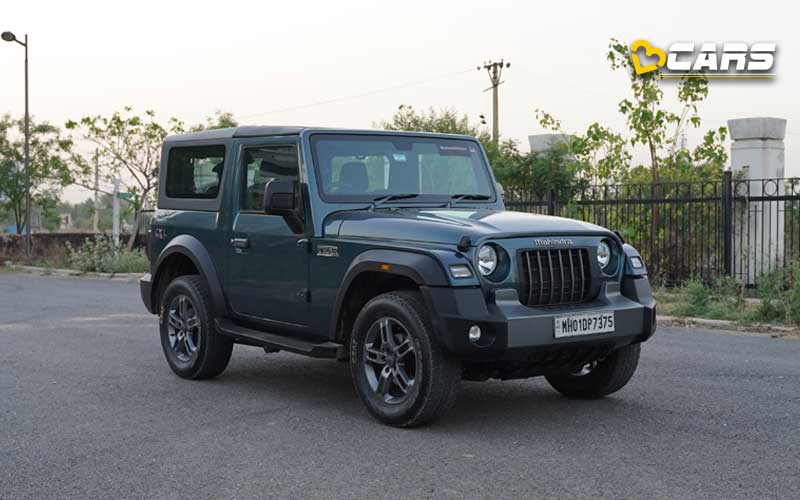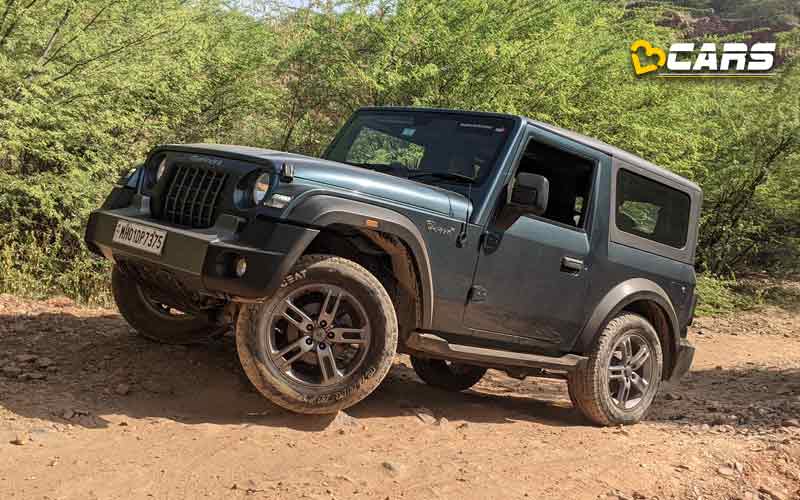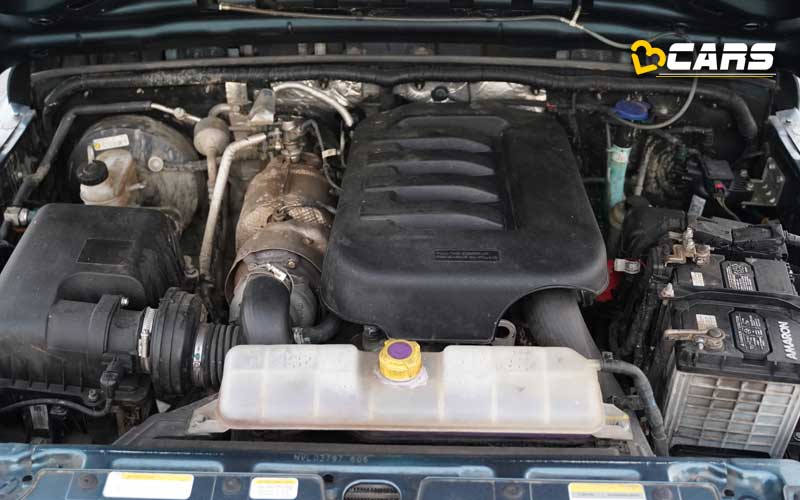2022 Mahindra Thar Engine Review - Driving & Performance Diesel Automatic
In this Mahindra Thar engine review, we’ll explain what it’s like to drive the Thar diesel-automatic in the city, on broken roads and on the highway and talk about the performance and efficiency of the car. Besides the engine characteristics, we’ll also discuss what kind of comfort you can expect from the Thar during your city, highway or off-road driving in the front as well as the rear seat. Please note that we compiled this review after driving the car Mahindra loaned to us for a few days.

We all know how capable the Thar is off-road. So, we’re not going to talk about that aspect of this SUV. Instead, we wanted to drive the car in its normal rear-wheel-drive mode in the city, on the highway and on broken roads to see what it’s like to drive on a daily basis.
Also Read: 2022 Mahindra Thar Exterior Review – Design & Features
|
|
|||
|
|
|
|
|
|
|
|
|
|
|
|
|
|
|
|
|
|
|
|
|
|
|
|
|
|
|
|
|
|
|
|
|
|
|
|
|
|
|
|
|
|
|
|
|
|
|
|
|
|
|
|
|
|
|
|
|
|
|
|
*Estimated

The 2.2L turbo diesel engine of the Thar makes 130PS of power and 300Nm of torque with the 6-speed manual as well as the 6-speed torque converter automatic. This peak torque comes in early at 1600rpm and stays put till 2800rpm. Compared to the turbo petrol Thar, this is still a little laid back performance as the petrol engine makes its 300Nm of torque between 1250rpm and 3000rpm. However, you can’t expect the petrol engine to deliver a real-world mileage figure like the diesel.
Mahindra Thar City Highway Mileage - Diesel-Automatic
During our commute involving a mix of city and some highway use, we saw close 13kmpl on the MID. With my conservative driving style, I got a combined figure of 17.5kmpl on the MID. I drove with 34PSI in the front and 32PSI pressure in the rear wheels to control some of the bounciness in the rear. With a cruise speed of 100kmph when possible, I got up a lower 16.5kmpl figure on the dash while a lower cruise speed of 80kmph drastically improved to 18.5kmpl.

It’s worth noting that the car shifts into 5th gear at 70kmph and it typically upshifts between 1700 and 2000rpm. The 6th gear comes only after 90kmph. Surprisingly, I got a lower efficiency figure cruising in the 6th gear than in the 5th gear. This could be because of the squarish design. A big, boxy front slams into the air rather than trying to cut through it. At the same time, the rear is even larger and boxier. This also adds to the drag from dirty air. Like a fish or an aeroplane, a tapering tail is more efficient at keeping its rear drag in check.
Mahindra Thar Diesel-Automatic Gear Change
The gear changes in the 6-speed torque converter automatic are perceptible but very smooth. It selects the appropriate gear and chooses upshift RPM on the fly based on the accelerator input. If you push the accelerator deeper, the upshifts happen at higher RPMs. And the more you push the accelerator and hold it there, the upshift RPMs accordingly move higher and higher to accommodate your need for stronger acceleration. If you want, you can also control the gear selection manually by pushing the shifter lever to the left into tiptronic mode. But given the suitable gear selection of the 6-speed torque converter, you’ll rarely feel the need to select the gears manually. A push of the accelerator pedal is all it takes to get it to downshift for a quick overtake.
Considering that the Thar we’re driving has done 30,000km so far, we were shocked to see that it has barely any rattling even when going over bad roads. Press cars generally go through a much tougher routine as the media house representatives put the car through rougher test cycles than an average car owner. The rattle-free experience in a 30,000km driven Thar speaks volumes about the Mahindra Thar’s build quality.
Mahindra Thar City Driving

Once you put the Thar diesel-automatic in the Drive mode and get moving, the doors lock automatically and when you unlock the car, the doors automatically unlock. The driver side door locking switch unlocks all 3 doors including the boot door. There's no separate lock/unlock button to lock or unlock the car. There’s also no dead pedal, which I missed in the Thar automatic since my left foot didn’t have a clutch pedal to keep it occupied.
In the city, the Thar’s wide body makes it difficult to get in and out of small spaces. However, it also gives it a commanding road presence and people often give the Thar some space in traffic. In unforgiving traffic situations, the Thar can feel too big to handle.
Thar City Handling And Ride Quality
Because of its top-heavy, body-on-frame construction, it leans quite a bit even when performing quick lane changes and taking sharp turns. So, you’ll have to slow down a bit while taking turns or for emergency lane change manoeuvres. Even when braking, the Thar nose dives as the soft suspension, which works well on broken roads, compresses more than a typical unibody hatchback, sedan or SUV. So, it will move about side-to-side and front-and-back more than a typical car. Even on fairly smooth roads, the Thar will offer poorer ride quality and comfort for the front as well as rear seat occupants than a typical unibody SUV or hatchback.
Bad Road Handling And Ride Quality
The Mahindra Thar makes a mockery of bad roads. Believe me, I'm not saying that lightly. Just like my Hero Impulse, I rarely felt the need to slow down for broken roads or those pesky little speed breakers. Unfortunately, the traffic is slow in such sections of the road as the drivers are busy negotiating potholes, and they’re not expecting a car approaching them at higher speeds. So, you’ll have to start flashing and honking from a distance so that they start making space for the Thar.

When driving over broken patches of road or dirt/gravel trails, the Thar moves with poise. The Thar neither bounces as much as a normal car nor does it make any suspension noises. You could feel that the Thar was designed to go over such roads. The suspension, tyres and ground clearance together give you the confidence to go much faster than any other road-friendly SUV or hatchback.
While the front end significantly flattens out the sharp edges of the road, the rear end bounces much more than the front. I tried deflating the rear tyres and creating up to a 5PSI difference between the front and rear tyres. Still, it made only a small difference in ride quality and the rear still bounced considerably more than the front end. So, for the sake of rear seat occupants, you should take it slow on broken roads.
The only annoyance while driving on bad roads was that the steering wheel gets shaky as the tyres try to find their path through the terrain. You need to apply a good amount of force to keep it steady and maintain the line.

Mahindra Thar Highway Driving
On the highways and expressways, the Thar has no trouble maintaining 100-120kmph. Unlike the older Thar, which used to get unbearably loud and harsh at 100kmph, the new one surprisingly keeps the vibrations and noise from the road, wind and engine within usable levels. It’s not as refined as a sedan but it’s certainly quieter than we expected, at least with the hardtop.
Thar Highway Handling And Ride Quality
The Thar’s braking is good but the nose dive takes some getting used to. High-speed lane changes also shake the car’s composure and it’s better to slow down in advance for such manoeuvres. I think the 100kmph speed is best for cruising in the Thar as it has enough torque in the rev band for an instant overtake while also giving us a better chance for quick lane changes without shaking up the cabin. If you’re not in a hurry, then you can even get better mileage with a cruise speed of 80kmph in 5th gear.
The only issue I noticed while covering longer distances on the highway in one go was the weight of the steering. It gets a bit too heavy for my taste because of the effort it needs to maintain the required line and add small corrections.
Verdict - Mahindra Thar Engine Driving Review
Overall, the Thar drives and feels like a big off-road SUV but not so much that you have to rewire your brain if you’re switching cars frequently. If you have another car at home, then you’ll have no trouble driving the Thar one day and your other car the next day. You may need some time to get used to the Thar’s width though.
Because of the bouncy ride quality, it’s very difficult to recommend Thar to customers who will use it as the primary car. If you already have another car at home, then you can consider adding Thar to our garage. The new Thar is refined enough that you can think of occasionally using it for commutes or road trips.
Also Read: Mahindra Thar Petrol, Diesel Variants Explained - Which One To Buy?



0 Comments
Mahindra Cars in India
XUV700 6
Seater
₹21.44 - ₹25.94 lakh*
*Ex-showroom priceXUV400 EV
₹15.99 - ₹18.99 lakh*
*Ex-showroom priceXUV300 TurboSport
₹9.31 - ₹13.16 lakh*
*Ex-showroom priceScorpio Classic
₹13.59 - ₹17.35 lakh*
*Ex-showroom priceScorpio-N
₹13.26 - ₹24.54 lakh*
*Ex-showroom priceXUV700 7-Seater
₹17.99 - ₹26.99 lakh*
*Ex-showroom priceXUV700 5-Seater
₹13.99 - ₹20.09 lakh*
*Ex-showroom priceBolero Neo
₹9.64 - ₹13.99 lakh*
*Ex-showroom priceThar
₹10.98 - ₹16.94 lakh*
*Ex-showroom priceBolero
₹9.80 - ₹10.81 lakh*
*Ex-showroom priceXUV300
₹7.99 - ₹14.75 lakh*
*Ex-showroom priceBolero Pick
Up
₹8.27 - ₹8.53 lakh*
*Ex-showroom priceMarazzo
₹14.12 - ₹16.48 lakh*
*Ex-showroom priceUpcoming Mahindra Cars
XUV300 Facelift
₹8.50 - ₹13.50 lakh*
*Expected PriceExpected Launch Feb 2024
Thar 5
Door
₹13.00 - ₹19.80 lakh*
*Expected PriceExpected Launch Aug 2024
Next Gen
XUV500
₹13.00 - ₹18.00 lakh*
*Expected PriceExpected Launch Dec 2024
eKUV100
₹9.00 - ₹12.50 lakh*
*Expected PriceExpected Launch Dec 2024
XUV e8
₹45.00 - ₹50.00 lakh*
*Expected PriceExpected Launch Jan 2025
All New
Bolero
₹10.00 - ₹12.50 lakh*
*Expected PriceExpected Launch Jun 2025
S204
₹12.00 - ₹16.00 lakh*
*Expected PriceExpected Launch Dec 2025
XUV e9
₹45.00 - ₹50.00 lakh*
*Expected PriceExpected Launch Apr 2026
Thar.E
₹28.00 - ₹30.00 lakh*
*Expected PriceExpected Launch Apr 2026
BE 05
₹45.00 - ₹50.00 lakh*
*Expected PriceExpected Launch Oct 2026
BE RALL
E Concept
₹45.00 - ₹50.00 lakh*
*Expected PriceExpected Launch Oct 2027
BE 07
₹45.00 - ₹50.00 lakh*
*Expected PriceExpected Launch Oct 2028
BE 09
₹45.00 - ₹50.00 lakh*
*Expected PriceExpected Launch Oct 2029
Latest Mahindra Cars Videos
Mahindra Bolero Neo Review | Exterior, Interior, Performance, Features | Branded Content
2022 Mahindra Scorpio-N Diesel Variants Explained | Z2, Z4, Z6, Z8, Z8L | MT, AT, 4WD | Oct
2022 Mahindra XUV300 Petrol Variants Explained | W4, W6, W8, W8 O | Oct | The Ultimate Analysis
Upcoming Mahindra XUV400 EV (Electric) Review w/ Actual Range & 0-100 | The First Impression | Sep
Mahindra Scorpio-N Petrol Variants Explained | Z2, Z4, Z8, Z8L | Sep | The Ultimate Analysis
2022 Mahindra Scorpio N Diesel-Manual Variants Explained | Z2, Z4, Z6, Z8, Z8L | July
2022 Mahindra Scorpio-N Petrol Automatic Drive Review | The First Impression | June
Mahindra Scorpio-N Launched | Prices, Exterior, Interior Details | June 2022
Mahindra Thar Diesel Automatic Review | The Sensible Review | April 2022
2022 Mahindra Thar Variants Explained | AX Opt, LX | Petrol & Diesel | The Ultimate Analysis | April
Thar Important Links